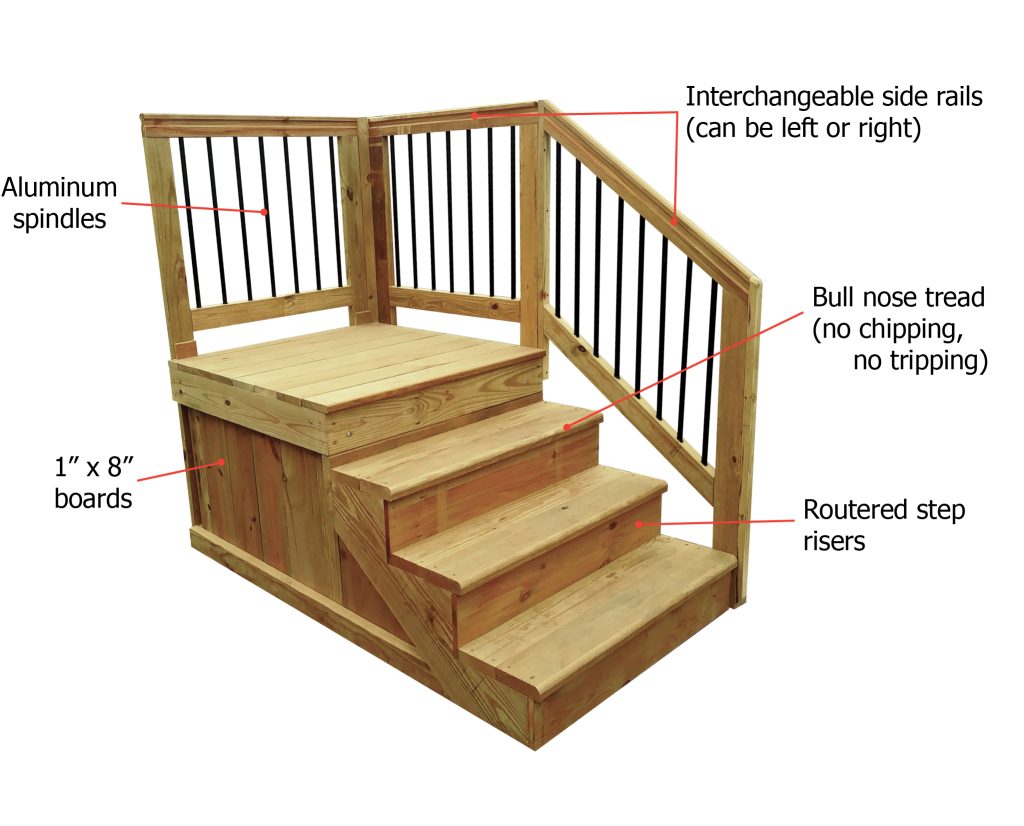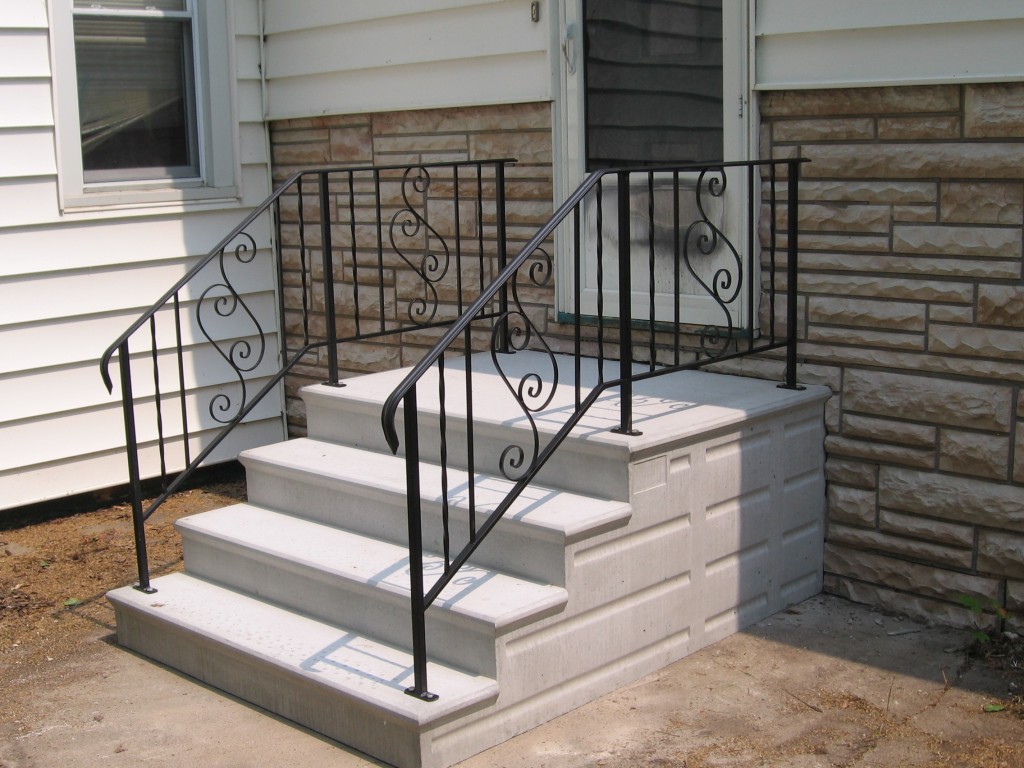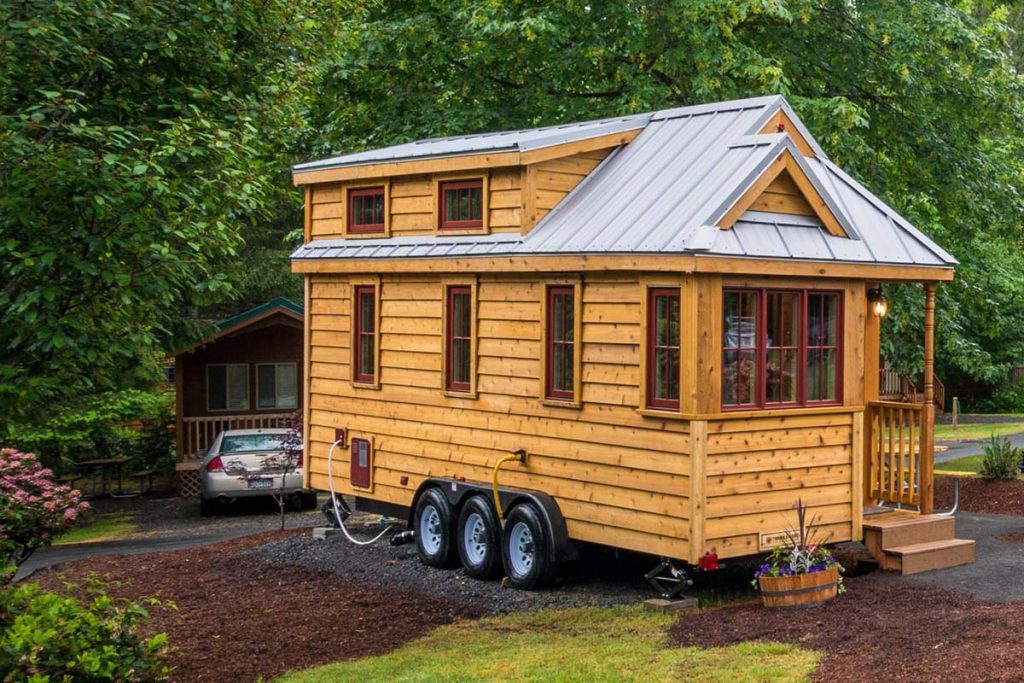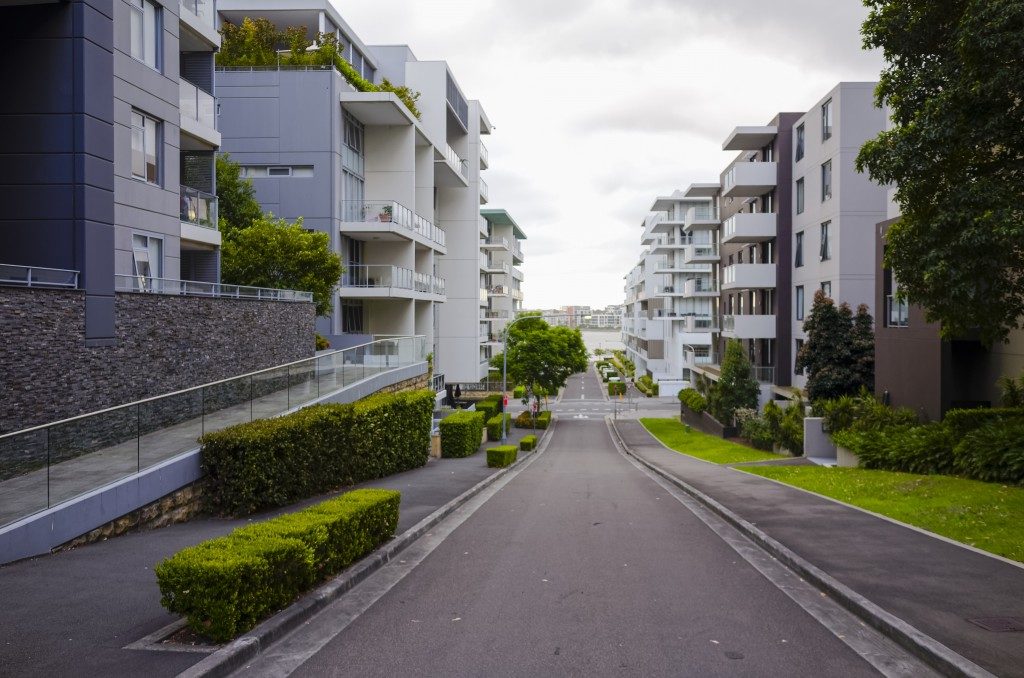Mobile homes, also known as manufactured homes, are a significant part of the housing industry, offering affordability, flexibility, and convenience that traditional homes may not. They are factory-built houses engineered and constructed to the strict specifications of the U.S. Department of Housing and Urban Development’s federal building code . Combining high-quality construction with the ability to move or relocate as needed, mobile homes present an innovative and practical housing solution. This has made them increasingly popular for people seeking a cost-effective yet comfortable living environment.
- Flexibility and Affordability of Mobile Homes
- What Is a Mobile Home?
- Terminology Associated with Mobile Homes
- Historical Context
- Materials Used for Building Steps – Mobile Homes
- Common Materials for Building Steps
- Wooden Steps
- Concrete Steps
- Composite Steps
- How To Build Steps for Mobile Home?
- Perks Of Setting Up Steps for Mobile Homes
Flexibility and Affordability of Mobile Homes
Mobile homes bestow unrivaled flexibility and affordability, making them a preferred choice for many individuals and families. Their cost-effectiveness is evident when compared to traditional homes, as they offer the comfort and amenities of a standard house but at a fraction of the price. This affordability extends beyond the initial purchase, as maintenance and repair costs are typically lower.
The flexibility of mobile homes is another compelling attribute. They offer the unique possibility to relocate your home, a level of mobility not possible with conventional houses. This enables residents to easily move for work, family, or simply to experience a new environment without the hassle and expense of buying a new property. Furthermore, the interior layout of mobile homes is often customizable, allowing residents to tailor their living space to their personal preferences and needs. These factors combined make mobile homes an attractive, adaptable, and cost-effective housing solution.
What Is a Mobile Home?
A mobile home, in its essence, is a prefabricated dwelling built in factories rather than on-site and then transported to the desired location. Constructed to be mobile, these homes were originally designed to be hauled by a vehicle to different locations, hence the term ‘mobile.’
Today, mobile homes are often anchored at a single location permanently or semi-permanently while still maintaining their inherent portability. They come in various sizes, ranging from single-section homes for simplicity and affordability to larger, multi-section homes designed for spacious living. Homeowners can also enhance the interior of the mobile home. For instance, homeowners can consider gothic home decor ideas if they are into the culture.
A key distinguishing feature of a mobile home is its ability to incorporate all the functionalities of a traditional home, including kitchen, bathroom, living, and sleeping spaces, within a compact, transportable structure. This allows for flexibility, convenience, and cost-effectiveness, making mobile homes an increasingly popular choice in today’s housing market.
Terminology Associated with Mobile Homes
Mobile homes have several names, each reflecting different aspects of their design, history, or use. One common term is “Manufactured Homes,” a word derived from their construction method. Manufactured in factories and then transported to their location, these residences offer all the amenities of a traditional home but with the unique advantage of mobility.
- Trailers – Trailers is another term frequently associated with mobile homes. This name originated from the early days of these types of dwellings when they were small enough to be towed behind a vehicle. Although modern mobile homes are much larger and more complex, the term “trailer” is still used colloquially in some regions.
- Modular Homes – Modular Homes are sometimes mistakenly used interchangeably with mobile homes. While both types of homes are prefabricated in factories, modular homes are usually placed permanently on a foundation and do not have the built-in mobility of a mobile home. One such example of a modular home is a modular cottage home .
- Park Homes – Park Homes or Residential Caravans are terms used chiefly in the United Kingdom to refer to mobile homes in caravan parks.
Historical Context
The history of mobile homes dates back to the early 20th century when they first emerged as “travel trailers” designed for vacationing and camping purposes. In the 1920s and 1930s, small and compact trailers could be easily towed by automobiles, providing an innovative solution for families seeking a nomadic lifestyle or simply an affordable holiday.
The advent of World War II marked a turning point in the evolution of mobile homes. In response to the wartime housing shortage and the need to accommodate rapidly mobilized industrial workers, these trailers evolved into larger, more permanent structures, providing a critical solution for the housing crisis. Known as “trailer houses” or “house trailers,” these homes were far more spacious and comfortable than their predecessors and designed to provide long-term housing.
Post-War, the mobile home industry continued to flourish, riding on the wave of economic prosperity. During the 1950s and 1960s, mobile homes became even larger and more luxurious, transforming into modern “manufactured homes.” They became a popular housing choice for their affordability, flexibility, and improved living standards, offering a viable alternative to traditional brick-and-mortar houses.
In 1976, the U.S. Department of Housing and Urban Development (HUD) implemented the Federal Manufactured Home Construction and Safety Standards, also known as the HUD Code. This marked the official transition from “mobile homes” to “manufactured homes,” reflecting the industry’s evolution towards building high-quality, durable homes. Today, modern manufactured homes come in various sizes and layouts, providing comfortable and cost-effective housing for millions worldwide.
Materials Used for Building Steps – Mobile Homes

Steps are essential for mobile homes, providing vital access to and from the dwelling. They play a critical role in enhancing the home’s overall functionality, ensuring comfortable and safe movement for the residents.
Due to their elevated structure, mobile homes require sturdy and well-designed steps that align with the home’s height. These steps not only facilitate easy entrance and exit but also contribute to the house’s aesthetic appeal. Moreover, they offer an additional safety feature, particularly in adverse weather conditions or for residents with mobility impairments. Therefore, building appropriate steps for a mobile home is as crucial as the dwelling, providing an integral link between the house and its surrounding environment.
Common Materials for Building Steps
When building steps for a mobile home, three materials are commonly used: wood, concrete, and composite, each with advantages and disadvantages.
- Wood – Wood is a popular material for building steps due to its versatility and aesthetic appeal. It allows for shape, size, and color customization, providing a warm and natural look that can complement the mobile home’s exterior. Treated lumber, in particular, is beneficial for outdoor use due to its enhanced resistance to weathering and rot. However, wooden steps require regular maintenance, such as staining or sealing, to prevent deterioration and extend lifespan.
- Concrete – Concrete steps are renowned for their durability and strength, making them an excellent choice for mobile homes. They withstand varying weather conditions and, with proper installation, provide a stable and secure entryway. Concrete steps can also be painted or textured to match the home’s aesthetic. On the downside, concrete can be more expensive and challenging to install than other materials and may crack over time without proper care.
- Composite Materials – Steps made from composite materials merge the advantages of wood and synthetic materials. They resist rot, splintering, and insect damage, akin to synthetic materials, while offering the beauty and warmth of wood. Composite steps are available in various colors and finishes, require minimal maintenance, and typically have a longer lifespan than wooden ones. However, they can be more costly upfront compared to wood and concrete.
Wooden Steps
Building wooden steps for a mobile home involves a series of steps. The process begins with gathering the necessary materials and tools, typically including treated lumber, screws, a saw, a level, and a drill.
Step 1: Measurements
Start by measuring the height from the ground to the bottom of the mobile home’s doorway. This measurement will determine the number of steps needed. A safe and comfortable step height is typically between 6 to 8 inches. By dividing the overall size by the desired step height, you can calculate the number of steps required. Also, measure the desired width for the stairs; a typical width is around 36 inches.
Step 2: Cutting the Wood
Next, cut the wood to the appropriate sizes using a saw. You’ll need to cut stringers, diagonal pieces of wood that support the steps from underneath. The number of stringers required depends on the width of the steps. Three stringers are typically adequate for a standard 36-inch wide staircase – one on each side and one in the middle. Also, cut pieces for the treads (the horizontal parts you step on) and risers (the vertical parts).
Step 3: Assembling the Steps
Start by attaching the stringers to the mobile home. Ensure they are level and secure. Then, screw the treads and risers onto the stringers, starting from the bottom and working your way up. As you install each step, use a level to verify that it is flat and even.
Step 4: Finishing Touches
Finally, consider adding a handrail for safety, particularly stairs with three or more steps. You may also want to add a layer of protective stain or sealant to the wood to enhance its weather resistance and prolong its lifespan. Depending on your preference, you can customize the color of the wood using paint or stain.
Remember that the process of building steps can vary depending on the specific requirements of your mobile home. Always verify that your steps are safe and sturdy before use, and consider seeking professional help if you need clarification on any aspect of the construction process.
Concrete Steps

Concrete steps offer several notable benefits for mobile homeowners. Their durability and strength primarily ensure longevity and stability, making them a reliable choice for an outdoor setting. Resistant to changing weather conditions, concrete steps retain structural integrity over time without warping or rotting. This level of robustness provides a safe and secure access point for the residents, regardless of season or climate.
Furthermore, despite their solid construction, concrete steps provide flexibility in terms of design. They can be painted or textured to match the aesthetic of the mobile home, contributing to an overall cohesive appearance.
While the installation process can be more complex and costly than other materials, the long-term benefits of concrete’s high durability and low maintenance needs often make it a worthwhile investment for many mobile homeowners.
Composite Steps
Composite materials are another innovative solution for constructing steps for mobile homes. As the name suggests, composite materials are made from wood and plastic, merging the best qualities of both materials to create a highly durable and maintenance-free product. They are designed to withstand harsh weather conditions and resist rot, fading, and insect damage, making them an ideal choice for outdoor use.
Composite steps not only promise longevity but also offer the beauty and warmth of wood without the need for regular maintenance. Available in various colors and finishes, they can be tailored to match the style and aesthetics of any mobile home. Despite their higher upfront cost than wood and concrete, composite materials’ long-lasting durability and low maintenance often make them a cost-effective choice in the long run.
How To Build Steps for Mobile Home?
Step-by-Step Guide to Building Steps for a Mobile Home
Step 1: Planning
Before you start building, it’s crucial to have a clear plan in place. Determine the number of steps you’ll need based on the height from the ground to the bottom of the door of your mobile home. A typical step height is around 7 inches, but this can be adjusted according to personal comfort.
Step 2: Gathering Materials
Once you’ve decided on the number and size of your steps, gather all the necessary materials. This may include wood planks or composite materials, nails or screws, a hammer or drill, a saw, and a tape measure.
Step 3: Measuring and Cutting
Measure the width and height of each step, then cut your material to size. Remember to account for the step (the part you’ll stand on, also called the ‘tread’) and the riser (the vertical part of the step).
Step 4: Assembly
Start by attaching the risers to the side of the mobile home, ensuring they’re stable and secured. Follow up by attaching the treads, ensuring they’re securely fastened and level. Repeat this process for each step.
Step 5: Safety Measures

Once your steps are assembled, consider adding safety features like handrails or non-slip mats. Regularly check the stability of your steps, tightening any loose screws or nails as needed.
Remember, building steps is a meticulous process that requires careful planning and execution. Always prioritize safety and durability, and don’t hesitate to seek professional help.
Perks Of Setting Up Steps for Mobile Homes
Installing well-constructed steps for your mobile home provides several salient benefits:
- Improved Accessibility : Steps provide a safe and comfortable access point to your mobile home. They bridge the gap between the ground and the home’s entrance, making it easier for residents to enter and exit.
- Enhanced Safety : Well-built steps can prevent falls and injuries, especially in adverse weather conditions or for residents with mobility impairments. Adding features such as handrails or non-slip mats further enhances safety.
- Better Aesthetics : Steps can add to the visual appeal of your mobile home. Whether you choose wood for a natural look, concrete for durability, or composite materials for their versatility, the right choice can complement the overall exterior design.
- Increased Home Value : Quality steps can enhance your mobile home’s value, making it more appealing to potential buyers or renters.
- Comfort and Convenience : Steps provide a level of comfort and convenience, making daily tasks such as carrying groceries or moving furniture into the home much easier.
Remember, while having steps is essential, ensuring they are well-constructed, sturdy, and safe is paramount. Always prioritize quality materials and proper installation when building steps for your mobile home.
Final Verdict
Building steps for mobile homes is crucial, reinforcing both the accessibility and functionality of these residences. Steps act as a pivotal access point, bridging the gap between the ground and the home entrance, which is especially significant given the elevated structure of mobile homes. They facilitate easy, safe entry and exit, a key functional element. Additionally, well-built steps contribute to the aesthetic appeal of the mobile home, complementing its exterior and enhancing its overall visual appeal. Therefore, constructing durable, secure, and visually appealing steps is integral to improving the livability and value of mobile homes.



